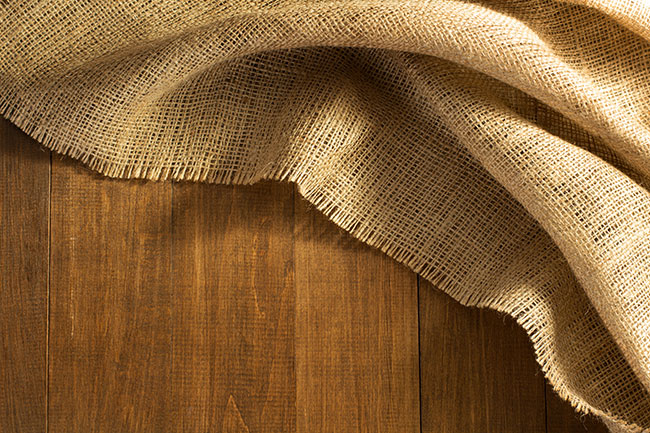When we think of natural, environmentally friendly fibre, most of us probably think of materials like hemp and cotton. While these are some of the most popular natural products around, they’re not the only alternative – there’s also the fabulous ‘Golden Fibre’, commonly known as jute.
Jute is a soft, supple, yet incredible strong fibre that is making waves in the natural material market. It is a biodegradable and compostable material that is extracted from the jute plant, which is known for being easy-to-maintain and needs little water to grow. A renewable resource, it’s increasingly being used by those searching for environmentally sustainable material solutions and is becoming more and more popular as the days go by.
Jute is commonly used to make planter bags for plants to be transferred from seedling to soil. The biodegradability of the product allows the seedlings to be put in the ground still in the bag, protecting their roots and minimising stress to the plant during transfer. The bags will then break down and compost the area surrounding the roots. Jute is also used to prevent soil erosion, as it can be used to cover and stabilise an area while natural vegetation slowly grows and re-establishes itself.
What makes jute an environmentally friendly, useful and attractive resource?
- Just one hectare of jute can produce 11 tons of oxygen in the growing season, and will consume around 15 tons of C02.
- Jute material is produced from the plant’s stem, and it is the cheapest vegetable fibre because of this.
- It is strong yet supple, and much more breathable when compared to synthetic materials.
- Jute is extremely versatile and is commonly used in the agriculture, textile and packaging industries.
- Jute has a high yield per hectare and is a completely renewable resource.
- 10 to 20 times more energy is used in the production of the closest synthetic competitor to jute.
- It is extremely versatile and can be blended with many other fabrics, both natural and unnatural.
- Jute is accepting of a number of different dyes.
- The production and growing of jute has created and provides jobs for around four million families located in impoverished areas.
- It is an alternative crop to rice in places that have a severely limited choice on crops for their land
As you can see, there are a whole host of benefits that come along with using a natural fibre like jute. It can be used in a variety of different industries and literally has hundreds of different ways in which it can be utilised.
But how exactly can you use jute in your everyday life? There are numerous way you can start, such as by saving the planet from plastic bag pollution and using a jute bag for all your shopping instead.
There are also several cool ways that you can use jute in your home which will not only make it look great, but also make your home more environmentally friendly too.
Get cozy with jute furniture
Give your house a unique and cozy feel by incorporating jute into your furniture. You could go the whole hog and get your lounge furniture covered with jute, or start simply by weaving thin ropes through the backs and sides of chairs and stools. The classic cream and brown shades the fibre usually comes in will give your home a cozy, yet modern feel. An added advantage of using jute in your furniture will also make it more durable and last longer than synthetic material.
Spruce up your lights
You can use jute on your lights to give your home a chic and charming feel. The options really are endless for this kind of project, and you can either buy whole lampshades that have been expertly handcrafted – our favourite are the hanging lamps – or you could take it on as a DIY project. You can use jute cord to wrap around old lampshades and bases, which will give them a rustic feel. Have a look at Ella Claire’s blog on DIY jute lampshades if you need some inspiration.
Jute rugs for a designer finish
One of the most popular ways jute is incorporated into households is through rugs and carpets. Floors can look bare (and are also a lot colder) without anything covering them. Get some designer jute rugs or carpets and use them to perfectly finish any room; they’ll give your household a rustic, charming look in just seconds.
Other uses for jute in the house
There are thousands of ways you can use jute in your home. If you’re looking for more ideas, check out this awesome article from Addicted 2 Decorating on some of the cute and quirky things you can do in your house with jute – including making curtains, cushion covers, table tops, fruit bowls, and absolutely everything in between!





